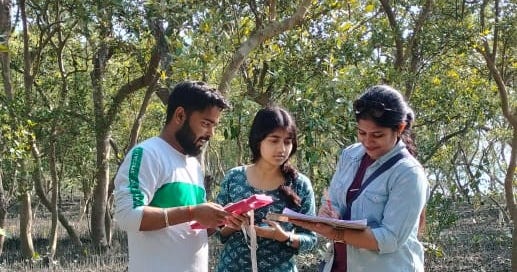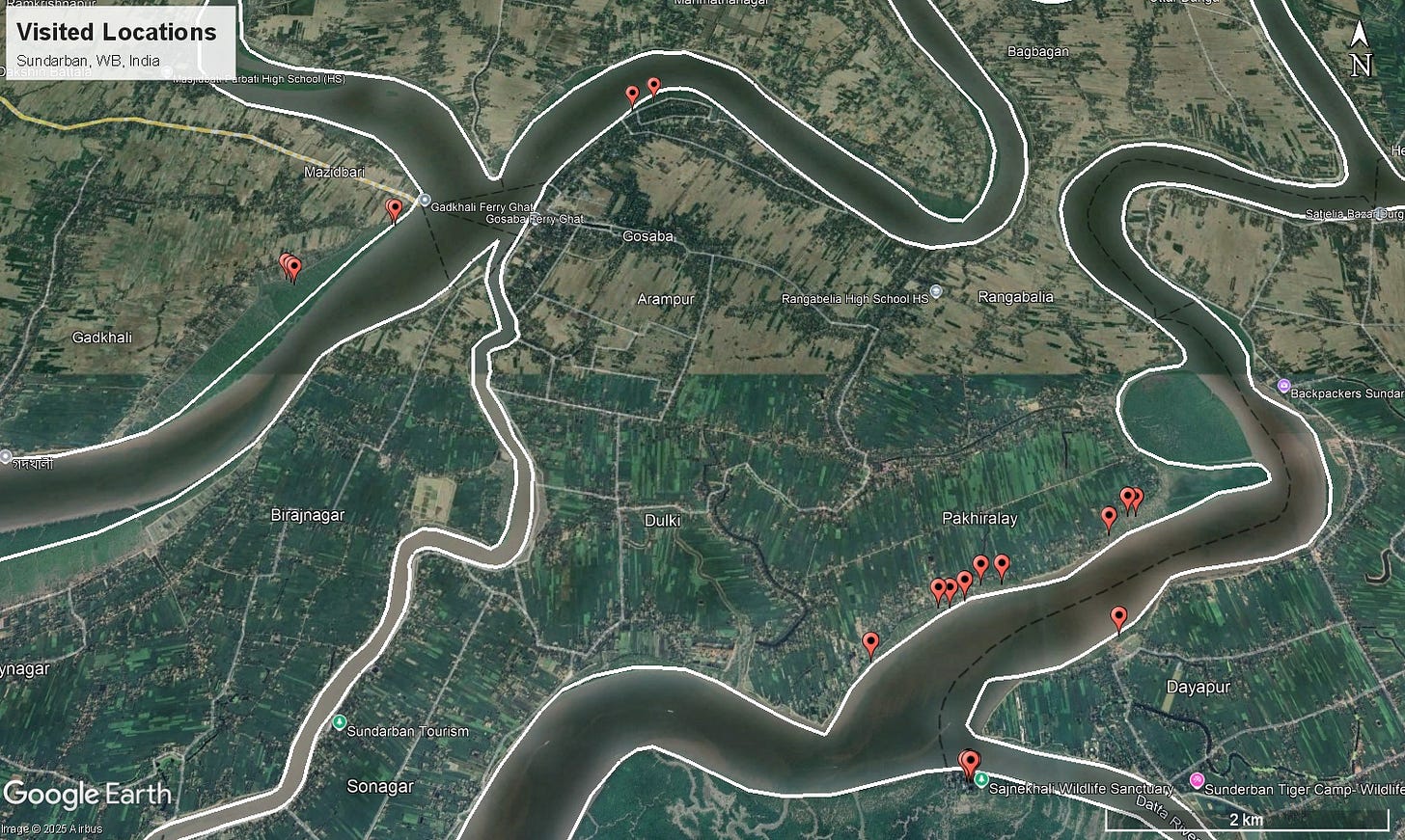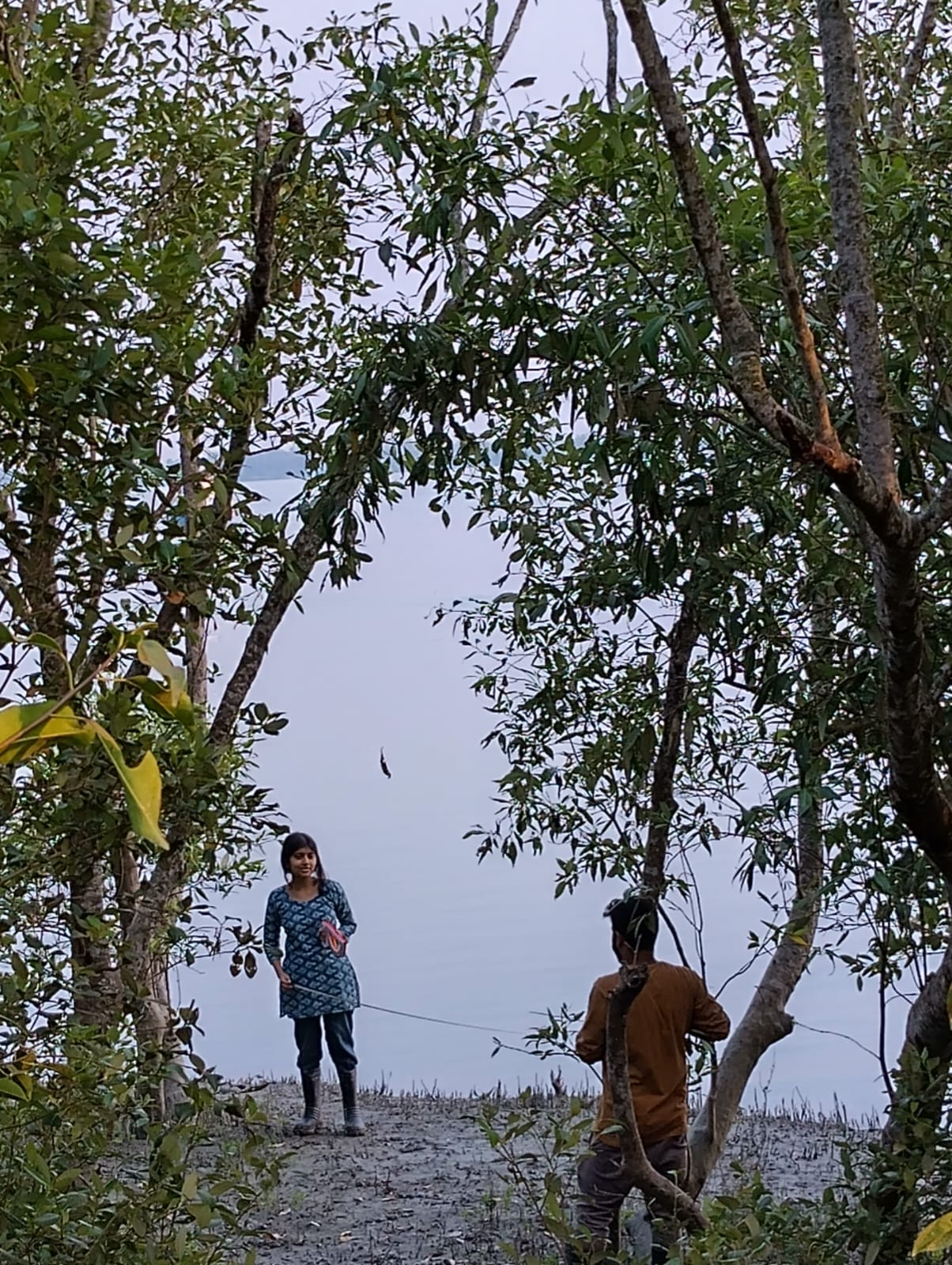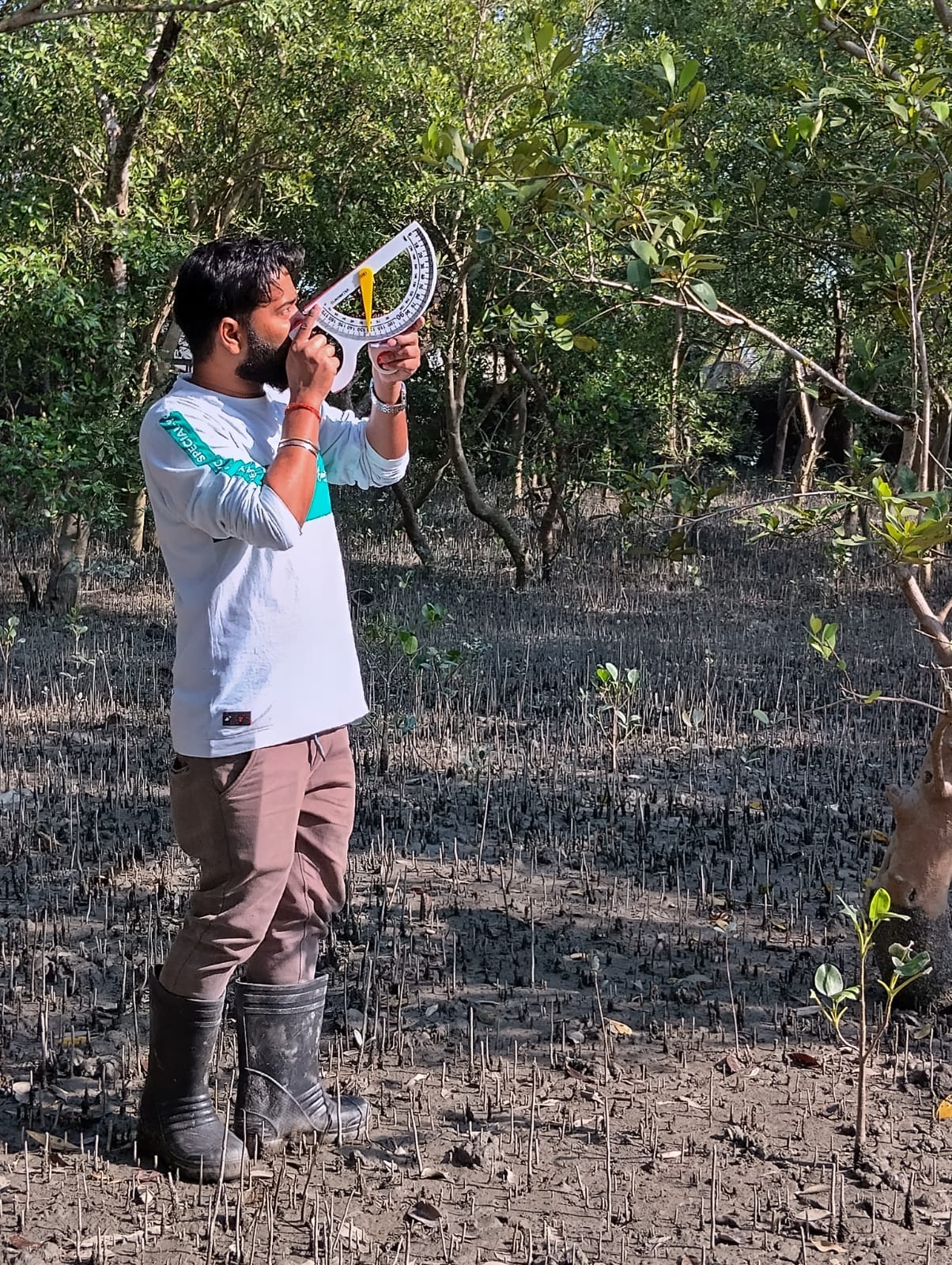Mangrove Carbon Study: Aetosky’s Sundarbans Expedition
A Journey into the World’s Largest Mangrove Ecosystem for Carbon Insights
In the race to combat climate change, above-ground biomass (AGB) estimation has emerged as a key tool for monitoring carbon storage and ecosystem health. Understanding AGB helps quantify the carbon sequestration potential of ecosystems, providing crucial data for climate adaptation strategies. While traditionally focused on forests, these techniques are increasingly being applied to urban green infrastructure, where accurate biomass estimation plays a critical role in urban sustainability planning.
At Aetosky, we blend ecological research with remote sensing and AI-driven analytics, empowering governments and city planners to make informed decisions. Our recent field survey in the Sundarbans Mangrove Forest - the world’s largest mangrove ecosystem - provides an example of how field data collection and remote sensing can be combined for precise carbon estimation. This research offers significant lessons for urban green space management.
Field Survey in the Sundarbans: A Scientific Approach to Carbon Estimation
Aetosky organized a two-day field survey in the Sundarbans Biosphere Reserve from February 6–7, 2025, focusing on AGB estimation in mangroves. The Sundarbans, a UNESCO World Heritage site, spans 10,000 km² and represents a unique blend of terrestrial and marine ecosystems. Given the complex terrain and restricted access, the survey targeted five accessible locations along riverbanks: Dayapur, Sajnekhali, Pakhiralay, Gosaba, and Gadkhali.
Our team used Aetos GO for route mapping and geotagging, ensuring precise sample collection while optimizing time. Each sampling plot was selected based on a combination of satellite data and field reconnaissance, focusing on areas with significant tree cover.
Data Collection and Methodology
The survey followed non-destructive AGB estimation techniques, collecting data from 80 trees across 20 plots. Accurate data collection is critical for developing reliable biomass models, and we employed a structured, step-by-step approach:
Plot Selection and Setup
A 10m x 10m plot was marked using a measuring tape.
Each plot was divided into four subplots to ensure equal representation of tree samples.
Parameter Measurement
The following parameters were recorded for each tree:
Circumference at Breast Height (CBH) at 1.3m height using a measuring tape
The angle of Elevation of the highest branch using a clinometer
Observer’s Distance from the tree using a measuring tape
Observer’s Eye Height (for accurate tree height calculation)
Geotagging and Species Identification using Aetos GO and a plant identification app
Species Sampling
We collected samples from key mangrove species such as Avicennia marina, Sonneratia apetala, and Heritiera fomes, each known for its significant biomass contribution. Leaves were photographed for species verification and future reference.
Clinometer for measuring tree height
Measuring tape for Circumference at Breast Height (CBH)
Aetos GO for geotagging and navigation
Plant identifier web application for species identification
Calculation and Allometric Equations
The collected data were processed using allometric equations - mathematical models that relate easily measurable parameters like diameter at breast height (DBH) and tree height to above-ground biomass.
Steps in Calculation:
Convert CBH to DBH: CBH was divided by π (3.14) to obtain DBH in meters.
Tree Height Calculation: The height of each tree was derived using the formula:
Allometric Equations Application: Biomass for each tree was calculated using species-specific equations from existing literature, which take both DBH and tree height into account.
Plot-Wise AGB Estimation: To scale up individual tree measurements to plot-level AGB, we averaged the biomass of all sampled trees in each plot. This plot-wise data is crucial for training and validating remote sensing models. Synthetic Aperture Radar (SAR) and LiDAR data will be integrated to predict regional AGB with high accuracy.
Connecting the Dots: Mangrove Lessons for Urban Green Infrastructure
So, why does mangrove biomass matter for cities? The methodologies used for mangrove AGB estimation can help quantify urban green cover - providing critical insights into carbon sequestration, tree health, and climate adaptation planning. Accurate estimation of urban tree biomass helps policymakers:
Identify high-impact green zones for carbon management
Assess the health of urban forests and tree canopies
Strategically plan green corridors to combat urban heat islands
Monitor carbon offsets and align with global climate targets
By combining remote sensing, LiDAR, and AI-driven modelling, cities can achieve a real-time understanding of their green assets, enabling smarter and more sustainable urban growth.
Driving Scalable Solutions for Sustainable Cities
At Aetosky, we believe that intelligence-driven urban green management is essential for climate-resilient cities. Our tools, such as Aetos GO and Athena, provide governments with end-to-end solutions - from mapping and monitoring green cover to integrating field-validated insights with high-resolution satellite data.
The possibilities are vast: from tree health assessments to urban carbon footprint management, our approach equips city planners and environmental agencies with actionable intelligence. As cities expand, integrating green cover management into planning strategies is no longer optional - it’s essential for a sustainable future.
Conclusion
Our field research in the Sundarbans highlights the importance of precise, data-driven carbon management. The same methodologies can transform urban landscapes into sustainable, high-impact green networks, bridging the gap between nature and the city. At Aetosky, we’re at the forefront of enabling smarter, greener cities - where technology and nature converge for a healthier planet.
Stay tuned as we continue to explore the intersection of green infrastructure, geospatial intelligence, and urban sustainability.
References
Bouillon, S.; Borges, A.V.; Castañeda-Moya, E.; Diele, K.; Dittmar, T.; Duke, N.C.; Kristensen, E.; Lee, S.Y.; Marchand, C.; Middelburg, J.J.; et al. (2008). Mangrove production and carbon sinks: A revision of global budget estimates. Global Biogeochemical Cycles, 22.
Houghton, R.A., Hall, F., Goetz, S.J. (2009). Importance of biomass in the global carbon cycle. Journal of Geophysical Research: Biogeosciences, 114, G00E03. https://doi.org/10.1029/2009JG000935












